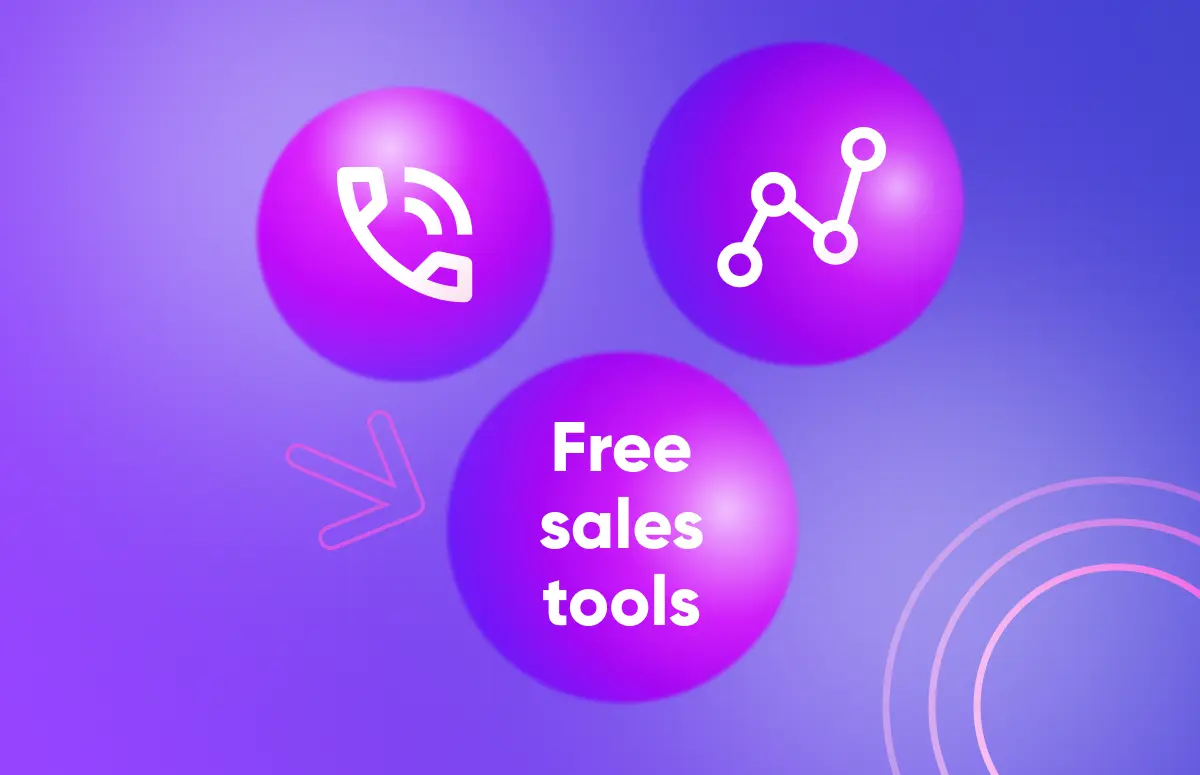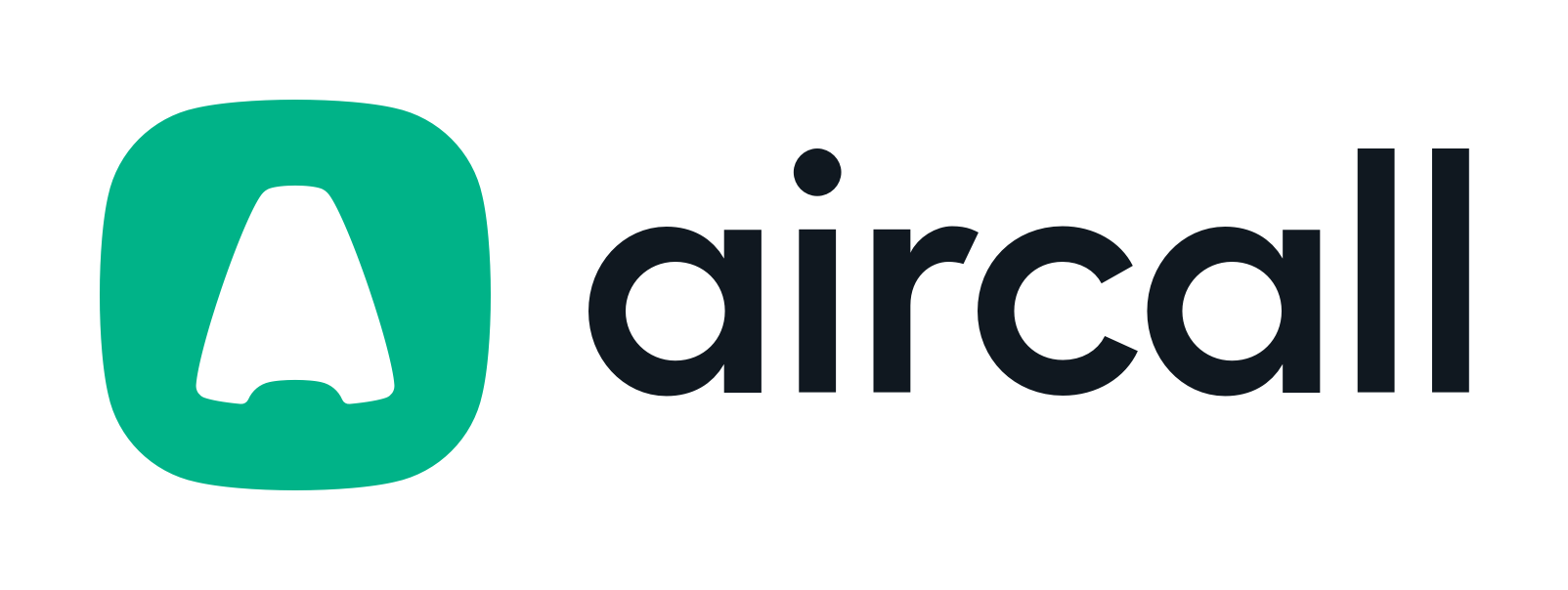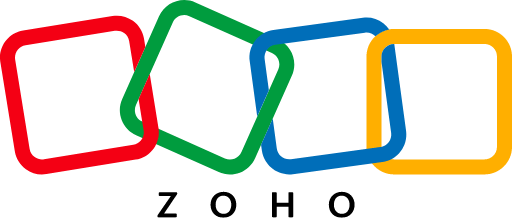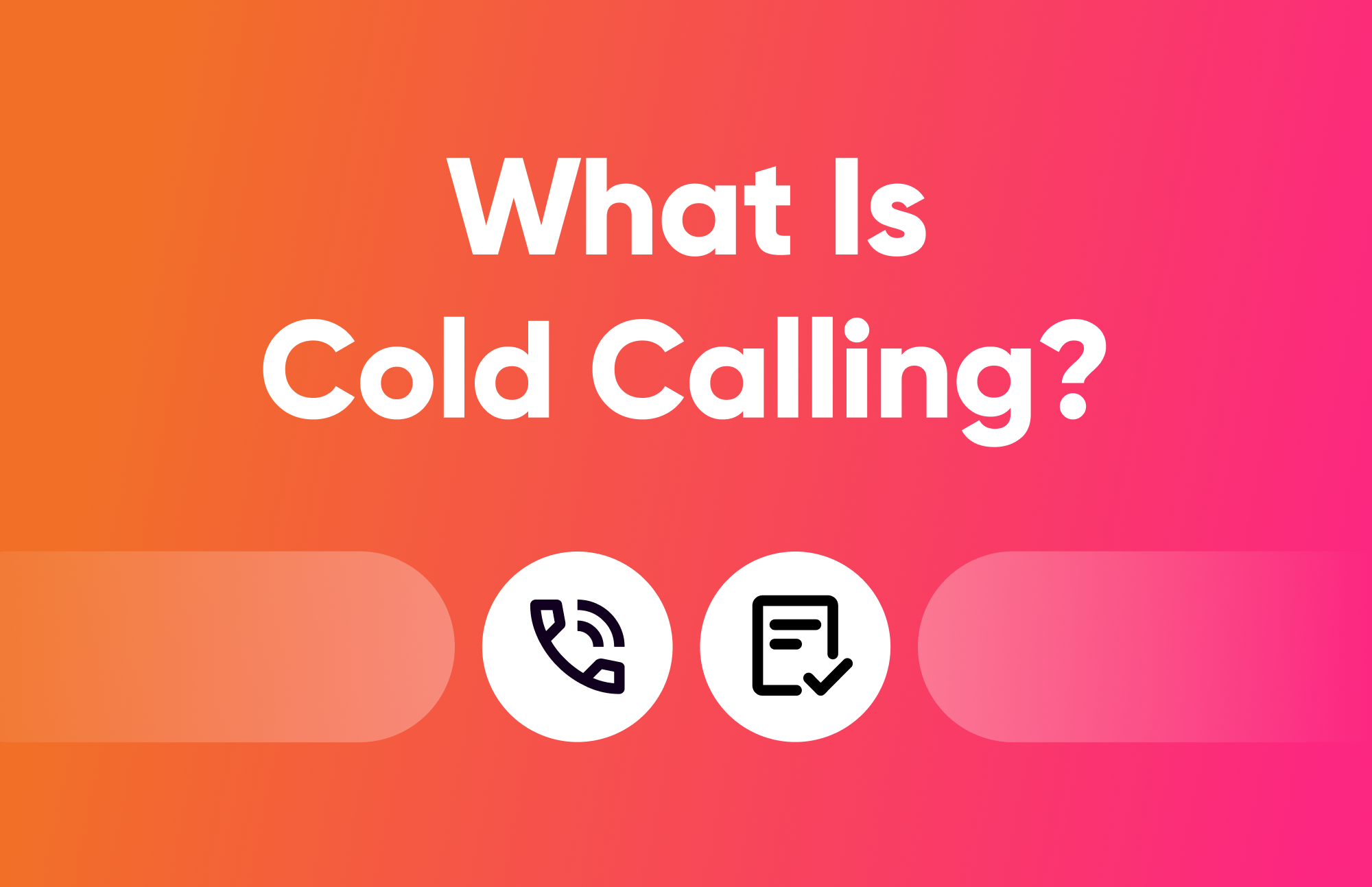
You need to turn cold prospects into warm prospects.
In outbound sales, cadences help build up relationships over a period of time.
It all sounds so simple, hey? (We know it’s not).
That’s why we’ve compiled this mega guide, with best practices, examples, and advice from top-performing sales reps.
What is a sales cadence?
A sales cadence is like a plan for talking to potential customers. It’s a step-by-step outreach sequence with emails, phone calls, and other channels.
The goal is to push leads down the sales funnel toward becoming a customer. Timing is important, and there are unique sales cadences for different categories of prospects.
Sales cadences help the sales rep do their job better and keep things organized. The sequences used are regularly A/B tested, and the art of creating a good cadence is continuously improving it.
Top sales cadence best practices
There are three key things every rep needs to know about cadences.
Let’s get straight into the best practice. 👇
The ideal length of a sales cadence
The ideal length of a sales cadence will depend on your industry, target audience, and the buying cycle of the product or service you sell.
Generally, SDRs we’ve spoken to have found that sales cadences need to be longer than five years ago. Booking outbound meetings used to take 200-400 touchpoints per sourced opportunity. Now, it’s more like 1,000-1,400 touchpoints.
Three times Top Sales Voice on LinkedIn, Morgan J Ingram recommends a cadence of 17+ touchpoints. A common breakdown of a cadence like this might include:
- Initial outreach (days 1-7): Introduction and initial engagement.
- Follow-up (days 8-12): Additional value propositions, addressing objections, or providing more information.
- Nurturing (days 13-17): Continued engagement with relevant content, educational materials, and social proof.
- Closing (days 18-21): Final push for a decision or a call to action.
Flexibility is key. SDRs should be ready to adapt the sales sequence based on the prospect’s responses and engagement levels. Regular review and adjustments help optimize the cadence for better results over time.
Elric Legloire, SDR Manager at Agorapulse, agrees that the top-performing SDRs test their cadences regularly; he says:
“You need to A/B test constantly to improve your results.”
“It’s no good just testing one thing like the subject line of an email and doing it once. Sales reps must test multiple things at once and do it often.”
How many touchpoints should I include in my sales cadence?
The ideal number of touchpoints in an outbound cadence depends on the length. You need to make sure that each action is spaced out enough not to be annoying but regular enough to be top of mind.
Touchpoints don’t need to be intense either - It could just be engaging with posts the prospect has commented on to pop up in their newsfeed on LinkedIn. This is a strategy Troy Munson, Senior Account Executive at Proofpoint, uses to warm up accounts before his initial outreach.
Jack Neicho, Account Executive at Salesloft, has said that they’ve found the ideal cadence length to be 16+ touchpoints, similar to what Morgan outlined above.
Research before reaching out
We all know that one touchpoint is never enough, so first impressions count. If you can nail it, you’re well on your way to building a relationship with your prospect.
Before you think of picking up that phone or hitting send on the email, you need to do your research.
Look at their LinkedIn activity. Are there any significant events? Like a change of job role or maybe a post they’ve commented on. Pick something specific and relay it back to them in your first touch.
This show you’ve taken some time to try and understand them and their needs.
Personalize your channels
Your communications with the prospect need to be highly personalized.
A large part of this is understanding which channels your prospect likes to use. There are two ways to achieve this:
- The multitouch approach
- A validated approach
The multitouch approach uses a variety of channels to try and understand which one the prospect prefers. Whether it’s phone, email, or social. Top enterprise SDRs argue that this approach means you don’t assume anything about your prospect.
You keep your options open before you decide on the best channel.
With a validated approach, you select one channel based on where you’ve first seen success with the prospect. This one uses the logic that people are unlikely to be reachable across all channels.
Ryan Reisert, previously Subject Matter Expert at Cognism says:
“Once you have an activated channel, this is the one you should choose.”
Each approach is valid because you personalize your channels, and which one you prefer is down to your style.
What are the best channels to use?
When creating an effective sales cadence, the best approach is a multi-channel approach. This way, you can see which channel your prospect is active on and meet them there.
Here are some of the popular outreach channels used today:
- Cold email: Pretty mainstream, and a lot of junk goes into inboxes today. So, you’ll need to write messages that stand out.
- Phone calls: Arguably the best channel. Get instant feedback from the prospect on their interest levels for your product or service.
- Social media: Use platforms like LinkedIn or Twitter to connect professionally. Leave comments, send messages, and engage with posts.
- Video messages: Send videos to make your messages more interesting and memorable. Tools like Vidyard or Loom can help.
- Direct mail: In some cases, send physical letters or materials. It’s a unique way to stand out, but it is best reserved for your top accounts.
- LinkedIn: Send messages directly and use LinkedIn to build relationships through post engagement and creating your personal brand.
- Webinars or events: Invite people to online events or webinars to interact directly and showcase your expertize.
- Text messages: Send quick messages for more casual communication.
Test and experiment
Building a cadence is an iterative process to see what sticks.
It’s important that no steps are skipped in the cadence, so you’re not leaving the prospect too much time to get cold. You can also see how the cadence performs if you add different mediums to your channels.
Think about how much noise is out there. With LinkedIn voicenotes peaking now, you need to get on what’s next.
Reps at Cognism have been using WhatsApp and Slack Connect recently in their cadences for 2023.
David Bentham, Director of Sales Development at Cognism says:
“Early adopters always win.”
“With WhatsApping people seem very receptive to it. SDRs make a call, then drop a WhatsApp afterward. As long as you have a professional-looking picture, generally we’re not getting much negative feedback on it at all.”
“Slack Connect is another emerging channel. You just need their email address. It’s a great way of getting another touchpoint out there that is unique.”
What if I target different territories?
SDRs targeting different regions will need to remember that there are some things they’ll need to consider. These include:
- Geographic variations. Are there differences in your product or service depending on the region it is sold to?
- Cultural differences. Different territories may have unique cultural nuances which influence communication preferences. So you’ll need to adapt your cadence.
- Industry-specific cadences. If you target specific industries, you’ll need to find the key pain points for each industry.
- Localized content. You should make sure you have content available in multiple languages.
- Time zones. There are times to cold call that are better than others. Some SDRs start calling at 05:00 so they can hit every time zone!
- Varied market conditions. Economic or market conditions can vary across territories. Adapting will mean you can address specific challenges or opportunities unique to each market.
Examples of sales cadence that convert
1. A simple B2B sales cadence
A lot of building successful sales cadences is in the testing. If you’re just starting out, and unsure of how your cadence will be received, it’s sensible to keep it simple.
Max Altschuler, ex CEO at Sales Hacker has a well-quoted example.
The cadence has ten touchpoints, spread across 10 days, and goes something like this:
- Day 1: Email or InMail
- Day 3: Email in the morning, call in the afternoon
- Day 5: Call in the morning, call with a voicemail in the afternoon
- Day 7: Email in the morning, call in the afternoon with a voicemail
- Day 10: Email and call in the morning
This is a multitouch approach, using all three core channels. It’s a good starting point, with the touchpoints placed close together.
For this reason, it’s less likely to be suitable for sales cycles where the warm-up period is longer.
2. Dialer-heavy
Time to hit the phones. Everyone loves a cold call.
Brad Norgate, Enterprise SDR at Cognism, books most of his meetings over the phone. He uses this dialer-heavy cadence, with the logic more conversations = more meetings.
A breakdown of the cadence includes. 👇
/Sales%20cadence%20best%20practices/infographic-dialer-heavy-sales-cadence-cognism.webp?width=552&height=402&name=infographic-dialer-heavy-sales-cadence-cognism.webp)
It completely makes sense to use this cadence if your prospect has been receptive on the phone. This is a great one for newbie SDRs to get into the swing of things as well.
3. SaaS sales (free trial)
For product-led growth (PLG) companies, sales cadence is key for converting inbound freemium or free trial users.
In the SaaS world using this approach means you can showcase what the product can do first. Here’s an example of one. 👇
/Sales%20cadence%20best%20practices/infographic-saas-free-trial-sales-cadence-EN.webp?width=350&height=875&name=infographic-saas-free-trial-sales-cadence-EN.webp)
Sales cadence tactics
A sales cadence is a series of touchpoints that aims to warm up prospects. These are leads that might have come through inbound (e.g., a demo request) or been found to be a good fit through prospecting.
Tactics usually happen across a variety of channels, like phone, email, and LinkedIn.
The timing of the touchpoints depends a lot on your sales cycle, your ideal customer profile (ICP), and how much your product or service costs.
Longer sales cycles or costly products usually translate to elongated sales cadences.
When you’re building a cadence, it’s also important to know why it’s likely to differ for outbound vs. inbound leads. 👇
Outbound leads
Prospects start out completely cold. Maybe they’ve not even heard of you.
It’s the role of the sales development representative (SDR) to start that initial contact and book a meeting.
/Sales%20cadence%20best%20practices/EN_meme-one-does-not-simply-cold-call.webp?width=477&height=281&name=EN_meme-one-does-not-simply-cold-call.webp)
Inbound leads
Inbound leads are often seen as more valuable (though sometimes this thinking is flawed). It depends a lot on the intent of the action the lead has taken.
Defining high-intent vs. low-intent activities could look like this…
High intent:
- Contacting the sales team with a question
- Requesting pricing
- Using a freemium version of a free trial
Low intent:
- Downloading an eBook
- Commenting on an article
- Engaging with LinkedIn content
Lower-intent actions typically exchange content (like an e-book) for data, it’s a lead generation tactic. But it can be flawed since the lead might not even match your ICP.
What a good sales cadence looks like
We’ll let you into a secret. There’s no blanket statement for the best sales cadence. It depends a lot on:
- Your business and what you sell
- Your ICP
You also need to be able to meet your prospects where they already exist. You’ll be able to gather clues if you do your research.
David says:
“I do actually have my phone number on LinkedIn for everyone to see and say in my bio I love to be cold called. What’s been really disappointing is when people have clearly gone to my LinkedIn profile, seen that I like to be cold-called, and then sent a direct message instead.”
“Some of them even say ‘I know you like to be cold called but here’s a video instead’.”
Back to the secret. There might not be a blanket statement, but there are some things a cadence definitely should be. Let’s talk them through.
Organized and clearly defined
It’s a focused approach. There’s nothing random about it. A cadence is a core sales process.
When you’ve got an organized and clearly defined one, you’re not making mistakes like sending the same cold email twice.
Or worse, forgetting to send the email at all. 🫠
Clearly defined outreach means reps know what comes next after their call, email, or social engagement. With sales cadence software, it’s made easier to see where prospects are in the sequence.
Scalable and flexible
Scalability becomes very important as more people join the sales team. You’ll be targeting more prospects and building a bigger pipeline.
This means more touchpoints to keep track of. It’s where your CRM really starts to add value.
Flexibility to adjust is also crucial. Just because your touchpoints and channels are clearly defined doesn’t mean they are set in stone. A lot of building out a sales cadence is trial and error.
If SDRs are finding that a shorter cadence is delivering better results, then they should be free to change it. It makes sense to respond to feedback and iterate the sequence for more success.
Trackable
You need to track to understand where you see results. This will under to understand which messages resonate the most.
When looking at what to track, you could do some A/B testing for cold emails. Look at your response rate and which emails are getting the most traction.
By tracking, you can also go back and refine your sequence.
Ask yourself questions like:
- Do prospects generally respond best to a cold call first?
- Which email subject lines work the best?
- Does adding a video to my email make it more effective?
Build your sales cadence
Creating a cadence requires thought, testing and some more thought. The process is iterative since sales climates change.
Hey, remember COVID? That changed prospecting a lot and sales teams needed to adapt their cadence to fit. People were much harder to reach through cold calling. Using other channels like cold emailing just became more important.
The process for how to create a sales cadence isn’t as easy as baking a cake. But if it were, it would include these ingredients. 🎂
Know your ICP and persona
You can’t properly segment the market into a suitable list in without knowing your ICP.
To build out an ICP you need to know:
- The size of the company you’d like to target
- Their industry
- Where you can do business
- Legal requirements you (or the company you do business with) need to meet
- Any service level agreements (SLAs)
- The channel mix and sales cadence tools
Your personas are the stakeholders who are involved in the buying process. Key decision-makers have the final say in whether to purchase your product.
The messages you include in your touchpoints need to change depending on which persona you’re speaking to.
Persistence, touchpoints and timing
Sales cadences only work if you stick to them. It’s all about the follow-up.
Balance is key.
Be persistent enough to get your prospect’s attention… but you don’t want to irritate them.
Some cadences start strong on day one using a variety of channels to reach out.
Messaging and personalization
The content quality of your message is vital. As a baseline you need to include:
- Why you’re reaching out
- Your offer
- The benefit
- Who’s seen success working with you
This is particularly important in tougher markets. Matthew Blanchard, GM EMEA at Varicent talks about how to position your product as a must-have in this clip. 🎬
Trial and error
It’s important to test and reiterate your sales cadence. There’s always room for improvement.
Markets change and what worked six months ago can quickly shift.
These are the four ways that you can test your sequences:
- A/B testing for cold emails - You can test different angles in your cold emailing sequence and see which one resonates the most.
- Adding new channels to the mix - New channels should always be added. You might see your response rates increase by over 50%!
- Tracking and measuring metrics - You could measure how many no’s you’re receiving for each touchpoint, for example.
- Sales rep performance - Ask your colleagues what’s working for them. This way you can try it in your cadence.
What metrics to track in your sales cadence
Tracking metrics in your sales cadence will help you learn how effective it is. Reps who look into these analytics will also know how their cadence can be improved.
Here are the industry averages for these three important sales cadence metrics according to Cognism. 👇
- Email conversion rates: 1-3% response rate, 23% open rate.
- Call to connect rate: anything above 5% is very good.
- Connect to booking: a 10%+ conversion rate is good.
These averages may vary depending on your industry, though. Let’s get into the main metrics to follow and what they are.
Response rate
What is it? The percentage of prospects who respond to your outreach.
What does it show? It indicates the initial engagement and interest in your message.
Conversion rate
What is it? Track the percentage of engaged prospects who move from one stage of the cadence to the next.
What does it show? This helps assess the overall effectiveness of your cadence in progressing leads through the sales funnel.
Open rate
What is it? The open rate indicates how many recipients opened your email.
What does it show? It provides insights into the engagement of your subject lines and preview text.
Click-through rate (CTR)
What is it? CTR measures the percentage of recipients who click on a link in email or other digital channels.
What does it show? It shows the effectiveness of your message content and the interest it generates.
Meeting rate
What is it? Monitors the rate at which prospects agree to book meetings or appointments.
What does it show? The key for indicating that your sequence is working - a meeting is the end goal for SDRs!
Pipeline velocity
What is it? Assess how quickly leads move through the sales pipeline.
What does it show? A faster pipeline velocity often indicates effective outbound strategies.
Churn or drop-off rate
What is it? Identify the rate at which prospects disengage or drop off from the cadence.
What does it show? This can highlight channels that aren’t performing well or messaging that isn’t resonating.
Feedback and responses
What is it? Qualitative feedback from prospects - Usually given straight away over the phone or could be to complement your email outreach even if they aren’t interested in buying right now.
What does it show? Provides insights into their preferences, objections, and overall satisfaction with your outreach.
Three sales cadence tools
Here are three tools that are crucial for an effective sales cadence.
1. Kaspr
Any good sales cadence starts with accurate data. Kaspr’s contact database has 500M+ phone numbers and email addresses, providing users with enriched info.
It’s free to get started with Kaspr - with ready-to-use workflow templates for quick starts, too.
2. Outreach
Outreach is a tool that can automate your sequences. The tool makes it easy to send personalized emails and track how well they’re doing. It also keeps track of phone calls and helps with managing tasks.
It’s a handy tool for sales teams to be more organized in their cadence, but tools like this must be used correctly (not as a spam cannon).
3. ChatGPT
Yes, that’s right - AI has hit the sales world. ChatGPT shouldn’t be relied on to write your emails for you, but it can assist with other areas. Reps use ChatGPT for prospect research, spell-checking emails, making their emails more concise, asking about their tone, and many more use cases.
👉 Get a full list of sales cadence tools (you can try most of these for free).
It’s all about the follow-up
Sales cadence isn’t a get-rich-quick scheme. 💰💰💰
It’s all about trying to build a relationship with your prospect. From initial outreach to meeting booked.
To recap, sales cadence best practices include…
- Research before reaching out - Before that first touch. Think about the smaller and more specific details you can include.
- Personalize your channels - Go to your prospects where they already exist. If you can suss out their preferred channels early, you’ll be off to a great start.
- Test and experiment - A cadence is never finalized, and environments are always changing.
The bottom line is it’s important to do all the steps in the cadence. Don’t skip any.
Then you can make informed decisions about how to improve.
Learn more about cadences
Looking to level up your sales cadences? Go to our video hub, prospecting on demand. There are literally tons of short-form educational clips for you to watch on cold calling, writing emails and much more!
Accurate European contact data
Get accurate data for your prospects and connect with your favorite sales tool








![15 Best Sales Cadence Software For 2025 [Compared]-festured-image](https://6052405.fs1.hubspotusercontent-na1.net/hubfs/6052405/2023%20-%20Blog/EN%20SEO%20blogs%20%28Clusters%29%20%5B%2B%20FR%2c%20ES%20and%20DE%20variations%5D/Outbound%20sales%20%28cluster%29/Sales%20cadence%20software/EN_sales-cadence-software-card.png)
